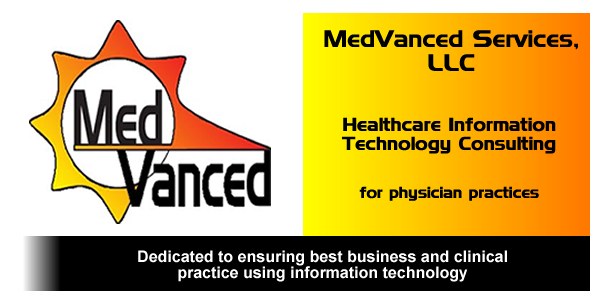I recently read that more than half of medical information systems fail due to user and staff resistance despite the fact that the technology is sound. This statistic is presented in the book Evaluating the Organizational Impact of Healthcare Information Systems by James G. Anderson and Carolyn E. Aydin. That’s a 50-50 gamble that the significant investment in the system you choose for your medical practice may go belly-up when you try to implement it! If you had the option to purchase “implementation insurance,” wouldn’t you do it? Well, consider this advice a step towards purchase of that insurance plan:
“When selecting an EHR, organizations need to thoroughly investigate the product to insure it can adapt to the changing needs of the services they provide. The clinicians and information management staff should have a clear understanding of all the workflow processes that happen within the organization and spend the time analyzing the system to guarantee the appropriate interaction for all the players involved. Spending greater time investing on enterprise process modeling, coupled with HL7 version 3 and XML provides the necessary flexibility for incorporating a variation of healthcare services.”
http://repositories.cdlib.org/cgi/viewcontent.cgi?article=1008&context=ischool
It is extremely important that physicians understand what they are investing in when choosing an EMR. Often, software vendors will overpromise and under-deliver, and physicians need to be aware of the level of support EMR vendors provide so they can fill in the gaps where necessary. Often, the gaps appear in the EMR implementation phase of the project, and can sabotage the success of the EMR software, resulting in one of those EMR implementation horror stories we have all heard about.
When implementing an EMR in your practice, it is important to remember that several things must be accomplished in order for the EMR to be successful:
Having a plan. The practice needs to create a project plan and track the progess of each component to ensure everything is on track. There are many factors that can affect the outcome of an EMR implementation and planning is one of the most effective ways to stay focused and ensure success. Here is an example of an EMR Implementation Outline.
High Acceptance Rate among doctors & staff. If everyone isn’t on board, the transition will be tough. A persistent resister can coerce others into joining their side, causing tension in the office. This can escalate to complete office disruption as staff resists and refuses to use the electronic medical record system.
Effective Training Sessions. If the doctors and staff do not retain the information presented during the training, there will be issues using the EMR in their every day routine. The EMR vendor should provide adequate training and support to help ensure your staff will be successful in using their software.
Expectations & Follow Up. The doctors and staff all must understand their job responsibilities related to the EMR, which will take time for everyone to get into their own routine. To ensure everyone is using the software properly and most effectively, follow up on their progress using the EMR and integrating it into their daily routine should be done regularly.
Subscribe to:
Post Comments (Atom)

EMR saved an incredible amount of money in office supplies and wasted time. I would gladly recommend A.I.med to any physicians to go paperless..It has thoroughly changed the office flow and eliminated the time wasted dealing with paper records.EMRs will not just change the way medical providers work in hospitals and doctors’ offices, they will improve the quality of care and reduce costs.
ReplyDeletepodiatry emr | psychiatry emr